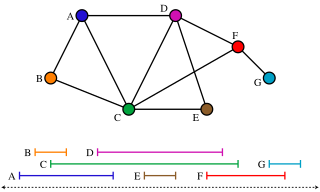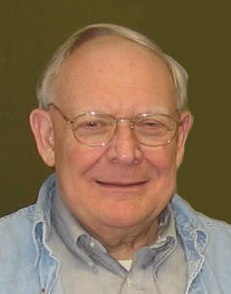This biography of a living person needs additional citations for verification .(June 2009) (Learn how and when to remove this template message) |
Lowell Wayne Beineke (born 1939) is a professor of graph theory at Indiana University – Purdue University Fort Wayne. Beineke is known for his elegant characterization of line graphs (derived graph) in terms of the nine Forbidden graph characterization.

Indiana University – Purdue University Fort Wayne (IPFW) was a public university in Fort Wayne, Indiana. Founded in 1964, IPFW was a cooperatively-managed regional campus of two state university systems: Indiana University and Purdue University. IPFW hit its highest enrollment in 2014, with 13,459 undergraduate and postgraduate students in nine colleges and schools, including a branch of the Indiana University School of Medicine. During its last academic year (2017–2018), IPFW had a total enrollment of 10,414 students. IPFW offered more than 200 graduate and undergraduate degree programs through IU or Purdue universities. The university's 14 men's and women's athletic teams competed in Division I of the NCAA Summit League.
In the mathematical discipline of graph theory, the line graph of an undirected graph G is another graph L(G) that represents the adjacencies between edges of G. The name line graph comes from a paper by Harary & Norman (1960) although both Whitney (1932) and Krausz (1943) used the construction before this. Other terms used for the line graph include the covering graph, the derivative, the edge-to-vertex dual, the conjugate, the representative graph, and the ϑ-obrazom, as well as the edge graph, the interchange graph, the adjoint graph, and the derived graph.
In graph theory, a branch of mathematics, many important families of graphs can be described by a finite set of individual graphs that do not belong to the family and further exclude all graphs from the family which contain any of these forbidden graphs as (induced) subgraph or minor. A prototypical example of this phenomenon is Kuratowski's theorem, which states that a graph is planar if and only if it does not contain either of two forbidden graphs, the complete graph K5 and the complete bipartite graph K3,3. For Kuratowski's theorem, the notion of containment is that of graph homeomorphism, in which a subdivision of one graph appears as a subgraph of the other. Thus, every graph either has a planar drawing or it has a subdivision of one of these two graphs as a subgraph.
Contents
Beineke has taught mathematics at Indiana University – Purdue University Fort Wayne since 1965. He received a B.S. from Purdue University in 1961 and a M.S. from the University of Michigan in 1962 and a Ph.D., in 1965, his Ph.D. advisor was Frank Harary. Beineke holds the Jack W. Schrey chair of mathematical sciences. Beineke was recipient of the Amoco Foundation the Outstanding Teaching Award in 1978, and again in 1992.

Purdue University is a public research university in West Lafayette, Indiana, and the flagship campus of the Purdue University system. The university was founded in 1869 after Lafayette businessman John Purdue donated land and money to establish a college of science, technology, and agriculture in his name. The first classes were held on September 16, 1874, with six instructors and 39 students.

The University of Michigan, often simply referred to as Michigan, is a public research university in Ann Arbor, Michigan. The university is Michigan's oldest; it was founded in 1817 in Detroit, as the Catholepistemiad, or University of Michigania, 20 years before the territory became a state. The school was moved to Ann Arbor in 1837 onto 40 acres (16 ha) of what is now known as Central Campus. Since its establishment in Ann Arbor, the university campus has expanded to include more than 584 major buildings with a combined area of more than 34 million gross square feet spread out over a Central Campus and North Campus, two regional campuses in Flint and Dearborn, and a Center in Detroit. The university is a founding member of the Association of American Universities.

Frank Harary was an American mathematician, who specialized in graph theory. He was widely recognized as one of the "fathers" of modern graph theory. Harary was a master of clear exposition and, together with his many doctoral students, he standardized the terminology of graphs. He broadened the reach of this field to include physics, psychology, sociology, and even anthropology. Gifted with a keen sense of humor, Harary challenged and entertained audiences at all levels of mathematical sophistication. A particular trick he employed was to turn theorems into games - for instance, students would try to add red edges to a graph on six vertices in order to create a red triangle, while another group of students tried to add edges to create a blue triangle. Because of the theorem on friends and strangers, one team or the other would have to win.





